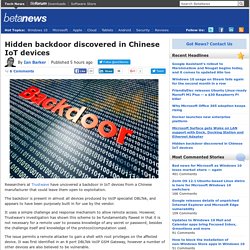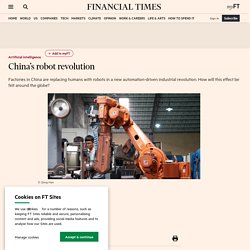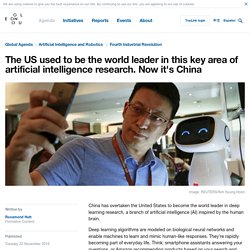

Hidden backdoor discovered in Chinese IoT devices – BetaNews. Researchers at Trustwave have uncovered a backdoor in IoT devices from a Chinese manufacturer that could leave them open to exploitation.

The backdoor is present in almost all devices produced by VoIP specialist DBLTek, and appears to have been purposely built in for use by the vendor. It uses a simple challenge and response mechanism to allow remote access. However, Trustwave's investigation has shown this scheme to be fundamentally flawed in that it is not necessary for a remote user to possess knowledge of any secret or password, besides the challenge itself and knowledge of the protocol/computation used.
The issue permits a remote attacker to gain a shell with root privileges on the affected device. It was first identified in an 8 port DBLTek VoIP GSM Gateway, however a number of other devices are also believed to be vulnerable. Drones, lasers, and tanks: China shows off its latest weapons. At the International Defense Exhibition and Conference, one of the world's largest arms fairs, weapons-makers from around the world show off their latest.

At this year's show in Dubai, China flaunted a range of high-tech weaponry spread across over 16,000 square feet of floor space. Included: S-20 attack submarines, FC-31 stealth fighter jets, and updates to laser and drone weaponry. Let's start with lasers. Poly Technologies showed off The Silent Hunter, one of the world's most powerful laser weapons. It claims an output of at least 50-70 kilowatts, which would make it more powerful than the 33-kilowatt laser weapon systems (LaWS) currently deployed on the USS Ponce.
The CH-5 drone is China's largest UCAV offered for export, with a fuel-efficient turboprop engine that gives it a 4,400-mile range and 60 hour flight time (soon to become 12,000 miles and 120 hours of flight). Conventional ground vehicles were also on display for sale. China’s robot revolution. The Ying Ao sink foundry in southern China’s Guangdong province does not look like a factory of the future.

The sign over the entrance is faded; inside, the floor is greasy with patches of mud, and a thick metal dust — the by-product of the stainless-steel polishing process — clogs the air. Artificial intelligence : Million-dollar babies THAT a computer program can repeatedly beat the world champion at Go, a complex board game, is a coup for the fast-moving field of artificial intelligence (AI).

Another high-stakes game, however, is taking place behind the scenes, as firms compete to hire the smartest AI experts. Technology giants, including Google, Facebook, Microsoft and Baidu, are racing to expand their AI activities. Last year they spent some $8.5 billion on deals, says Quid, a data firm. That was four times more than in 2010. Log In - New York Times. China's Rise in Artificial Intelligence - The Atlantic. Each winter, hundreds of AI researchers from around the world convene at the annual meeting of the Association of the Advancement of Artificial Intelligence.

Last year, a minor crisis erupted over the schedule, when AAAI announced that 2017’s meeting would take place in New Orleans in late January. The location was fine. The dates happened to conflict with Chinese New Year. Chinese factory replaces 90% of human workers with robots. Production rises by 250%, defects drop by 80% After a factory in Dongguan, China, replaced most of its workers with robots, it witnessed a spectacular rise in productivity.

Image not from said factory. Image credits: Industriemuseum Chemnitz. While some of the world’s leaders are obsessed with keeping people out of their country, an unspoken entity is slowly but certainly taking our jobs: robots. It’s been long discussed that robots and computers will start taking our jobs “in the near future” — well that near future is upon us and we’re not really prepared to deal with it. Of course, some jobs are more at risk than others, are few are as threatened as factory jobs. According to Monetary Watch, the Changying Precision Technology Company focuses on the production of mobile phones and uses automated production lines.
Without a doubt, this is something we’ll be hearing more and more of in the future. I’ve got some very mixed feelings about this. Chinese Firms Racing to the Front of the AI Revolution. The US used to be the world leader in this key area of artificial intelligence research. Now it's China. China has overtaken the United States to become the world leader in deep learning research, a branch of artificial intelligence (AI) inspired by the human brain.

Deep learning algorithms are modeled on biological neural networks and enable machines to learn and mimic human-like responses. They’re rapidly becoming part of everyday life. Think: smartphone assistants answering your questions, or Amazon recommending products based on your search and purchasing history. Image: The National Artificial Intelligence Research and Development Strategic Plan The White House has released two reports that aim to help prepare the US for the growing role of artificial intelligence in society.